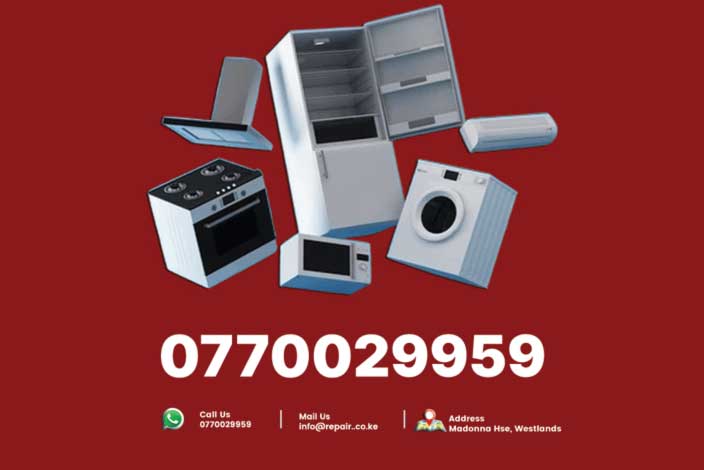Reasons why a washing machine won’t Drain
Clogged Drain Hose
A common reason a washing machine won’t drain is a clogged drain hose. Lint, small clothing items, or debris like coins can accumulate in the hose, blocking water flow. Over time, detergent residue and fabric softener can also build up, narrowing the hose’s passage. Inspect the hose for kinks or bends that restrict flow. At RepairKE, we recommend detaching the hose carefully and flushing it with warm water to clear blockages. Regular maintenance, such as cleaning the hose every six months, can prevent this issue.
"Up to 60% of washing machine drain issues stem from blockages in the hose or pump."
— Appliance Repair Technician
Faulty Drain Pump
The drain pump is responsible for pushing water out of the washing machine. If it’s faulty, water remains trapped in the drum. Pumps can fail due to wear and tear, especially in older machines, or become clogged with debris like hair or small objects. A humming noise during the drain cycle often indicates a struggling pump. RepairKE technicians use diagnostic tools to test pump functionality and replace it if necessary. Regular servicing can extend the pump’s lifespan and ensure efficient drainage.
"A failing pump can cause water to back up, leading to potential leaks and damage."
— Home Appliance Expert
Blocked Lint Filter
Many washing machines have a lint filter or trap that catches debris during washing. If not cleaned regularly, the filter clogs, preventing proper drainage. This is especially common in top-load machines used for heavy laundry loads. Check your machine’s manual to locate the filter, typically near the drum or at the end of the drain hose. RepairKE advises cleaning the filter monthly to avoid drainage issues and maintain optimal performance.
"Neglecting the lint filter can reduce your machine’s efficiency and increase energy costs."
— Energy Efficiency Consultant
Kinked or Improperly Installed Drain Hose
A kinked or improperly installed drain hose can restrict water flow, causing the machine to stop draining. This often happens when the hose is bent during installation or pushed too far into the drainpipe, creating a siphon effect. Ensure the hose is straight and not inserted more than 15 cm into the drainpipe. RepairKE professionals can reposition or replace the hose to restore proper drainage and prevent future issues.
"Correct hose installation is key to avoiding drainage problems and extending machine life."
— Plumbing Specialist
Malfunctioning Lid Switch
In top-load washing machines, a faulty lid switch can halt the drain cycle. The switch ensures the machine operates only when the lid is closed. If it’s defective, the machine may pause mid-cycle, leaving water in the drum. Listen for a clicking sound when closing the lid; if absent, the switch may need replacement. RepairKE technicians can diagnose and fix lid switch issues quickly, ensuring your machine resumes normal operation.
"A broken lid switch can mimic drainage problems, causing unnecessary repair delays."
— Appliance Service Expert
Control Board or Timer Issues
The washing machine’s control board or timer directs the drain cycle. If either component fails, the machine may not signal the pump to activate, leaving water trapped. This is more common in older models or after power surges. Signs include the machine stopping mid-cycle or displaying error codes. RepairKE uses advanced diagnostics to identify control board issues and recommends repairs or replacements based on the machine’s condition.
"Electronic failures account for 20% of washing machine drainage issues in modern models."
— Electronics Repair Specialist
Excessive Suds
Using too much detergent or the wrong type can create excessive suds, which interfere with drainage by slowing water flow. This is common with non-HE (high-efficiency) detergents in HE machines. Run a rinse cycle with no detergent to clear suds. RepairKE suggests using the recommended detergent amount and type specified in your machine’s manual to prevent sudsing issues.






